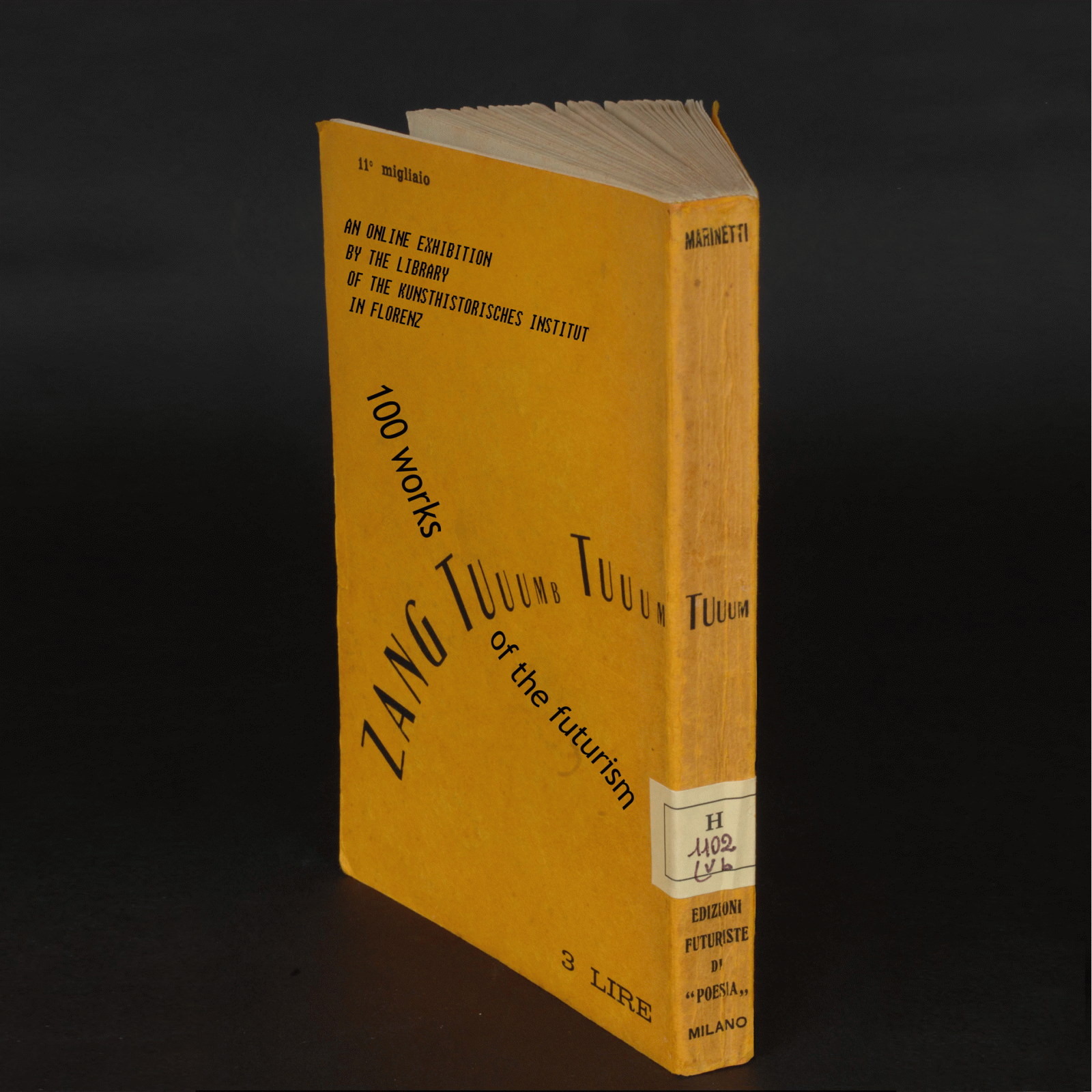Online Exhibition
ZANG TUMB TUUM…
100 works of Futurism
An Online Exhibition by the Kunsthistorisches Institut in Florenz - Max-Planck-Institut

Futurism was a movement whose ideology was reflected not only in the visual arts, but, as is generally known, primarily in literary and musical works, as well as manifestos, flyers, photographs, films, plays, and short-lived newspapers. This means that Futurism can be documented in many ways, including some unconventional ways. In a research library based on academic literature like the library of the Kunsthistorisches Institut, the collection of original works of the Futurist movement thus inevitably occupies a special position. Indeed, in addition to publications in book form, the library also includes manifestos, subscripts, music scores and curiosities such as a menu card for a Futurist cuisine meal. The approximately 500 Futurist works and 40 newspapers from the first 'heroic' phase (1909 - 1916) and the second more diffused phase (ca. 1918 - ca. 1940), which the institute possesses, have been recognized on many occasions as a both significant and original section of the inventory of the library. On the other hand, little was known to date about the history of this collection. To this day, very vague information with little supporting evidence abounds about the dimensions of the collection, the circumstances surrounding its acquisition and the acquisition chronology. Therefore, we want to use the occasion of this online exhibition on the one hand, to present a panorama of the many facets of Futurism in the form of selected outstanding works and on the other hand, to examine the history of this section of the library's inventory more closely.
The majority of the collection arrived in the library between 1955 and 1965. Most of the works were acquired through the Italian book trade, only a few titles were gifts. We are not aware that any Futurist publication was added to the library shortly after its publication. In fact, the reopening of the institute in 1953 after the evacuation, repatriation and provisional administration due to the war appears to signal a definite terminus post quem. Around the same time, the library was opened up to a previously unknown extent to modern and even contemporary art in Italy, even if not with the same intensity that was shown for Futurism. Without a doubt, this was the start of a new chapter in the institute's acquisition policy.
I want to sincerely thank Lisa Hanstein and Brigitte Reineke above all, as well as other colleagues from the library and the photo library of the Kunsthistorisches Institut, for both the conceptual and technical implementation of the idea for this online exhibition.


